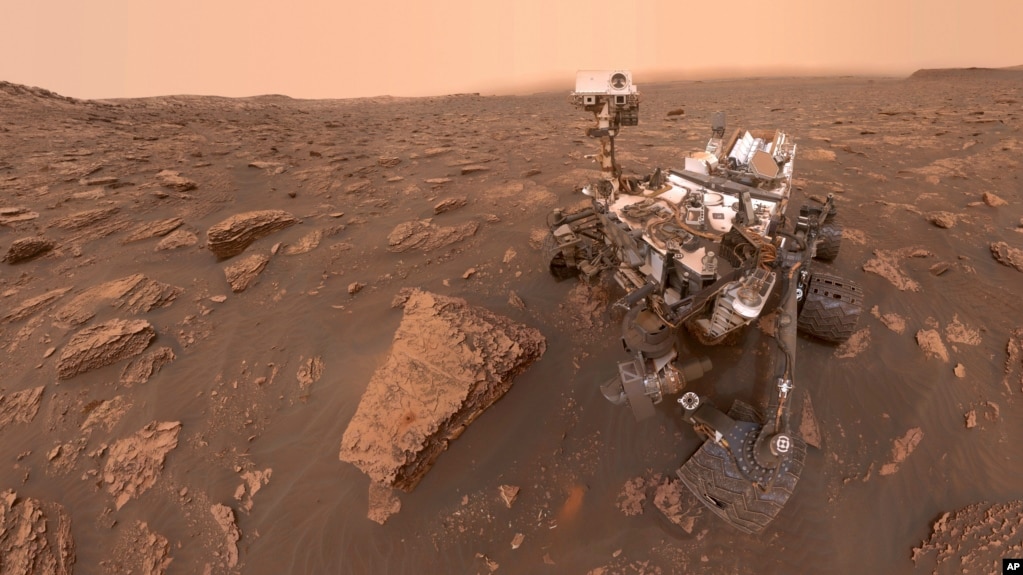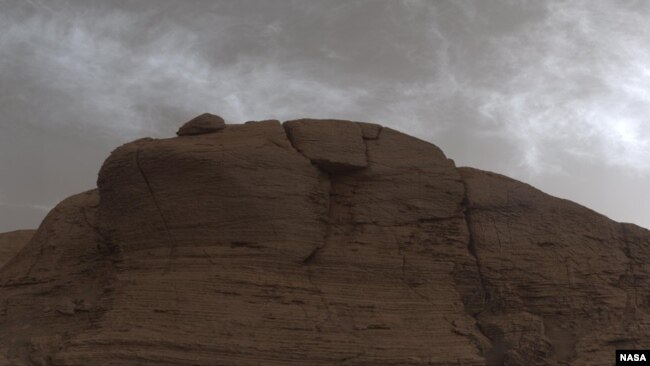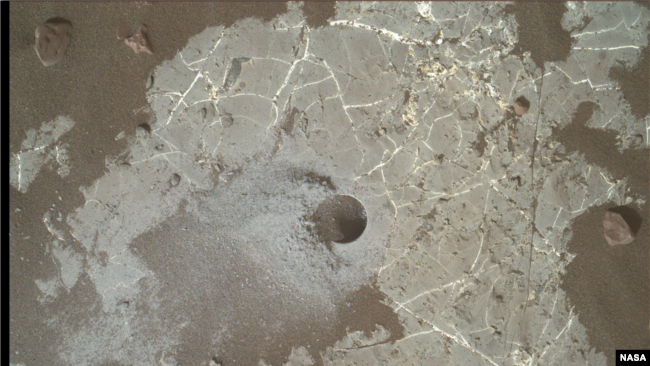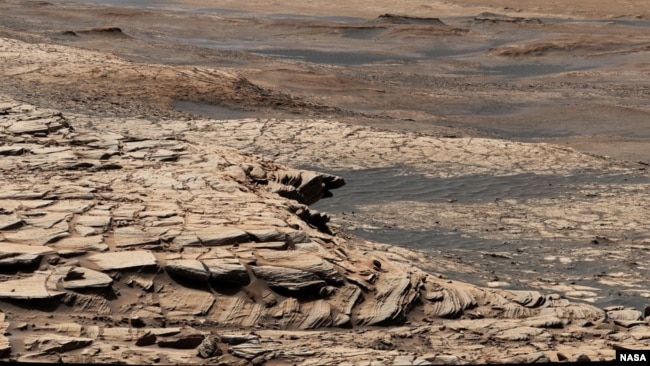Study: Mars Rock Contains Carbon ‘Signals’ Possibly Linked to Life

A new study has found that rock material collected on Mars contains the same kinds of carbon “signals” linked to living organisms on Earth.
Scientists say the presence of carbon may suggest evidence of ancient biological life on Mars. But they also note that the finding could be related to nonbiological processes.
The study is based on rock samples collected by the American space agency NASA’s Curiosity explorer. The explorer, or rover, landed on Mars in 2012. It has been exploring areas around the planet’s Gale Crater.
The rover used a robotic arm to collect rock material from below the surface of Mars. The samples were subjected to high heat inside a chemistry laboratory on Curiosity, NASA explained. This resulted in a release of gas from the rock material.
One of the rover’s instruments then measured isotopes from carbon released during the heating process. Results of the experiment were examined by scientists on Earth. Their findings were recently reported in a study in Proceedings of the National Academy of Sciences (PNAS).
Carbon is an important element because it is present in all life on Earth. Carbon has two naturally occurring isotopes, 12 and 13. Measuring these isotopes can provide researchers with signals about carbon-related activities from the past.
The study found that the collected samples had large amounts of carbon 12. This kind of carbon is used by living creatures on Earth to get energy from food or the sun, NASA noted.
Christopher House is a Curiosity scientist based at Pennsylvania State University. He led the study.

House said in a statement that on Earth, “processes that would produce the carbon signal we’re detecting on Mars are biological.” He added: “We have to understand whether the same explanation works for Mars, or if there are other explanations, because Mars is very different.”
The biological explanation involves the idea that bacteria may have released methane gas into the atmosphere. Ultraviolet light could have converted this gas into larger, more complex molecules that settled on the surface. These molecules could have remained in the Martian rocks collected by Curiosity.
In 2019, NASA researchers reported that Curiosity had measured levels of methane on the surface of Mars. While the team said this could also be a sign of ancient life, NASA has not been able to confirm whether the methane resulted from biological causes.

Two other theories – both nonbiological – are identified in the new study.
One explanation suggests the carbon signals might have resulted from an interaction of ultraviolet light and carbon dioxide gas in the Martian atmosphere. This process could have produced carbon-containing molecules that settled on the surface.
The other theory is that the carbon could have resulted from an event hundreds of millions of years ago. In that event, the solar system passed through a huge cloud of dust that could have been rich in the kind of carbon discovered in the rock samples.
“All three explanations fit the data,” House said. “We simply need more data to rule them in or out.

Andrew Steele is a Curiosity scientist based at the Carnegie Institution for Science in Washington D.C. He noted that Curiosity is the first rover to be equipped with the tools to study carbon isotopes on the surface of Mars.
“Defining the carbon cycle on Mars is absolutely key to trying to understand how life could fit into that cycle,” Steele said. “We have done that really successfully on Earth, but we are just beginning to define that cycle for Mars,” he added.
Words in This Story
sample – n. a small amount of something that gives you information about the thing it was taken from
isotope – n. a form of atom that has a different atomic weight from other forms of the same atom but the same chemical structure
occur – v. to happen
convert – v. to change the appearance, form or purpose of something
cycle – n. a series of events that happen in a particular order and are often repeated
absolutely – adv. completely
key – adj. very important in influencing or achieving something
https://learningenglish.voanews.com/a/study-mars-rock-contains-carbon-signals-possibly-linked-to-life/6405728.html